How long is the queue to see the Queen lying in state? Live queue tracker and where it starts
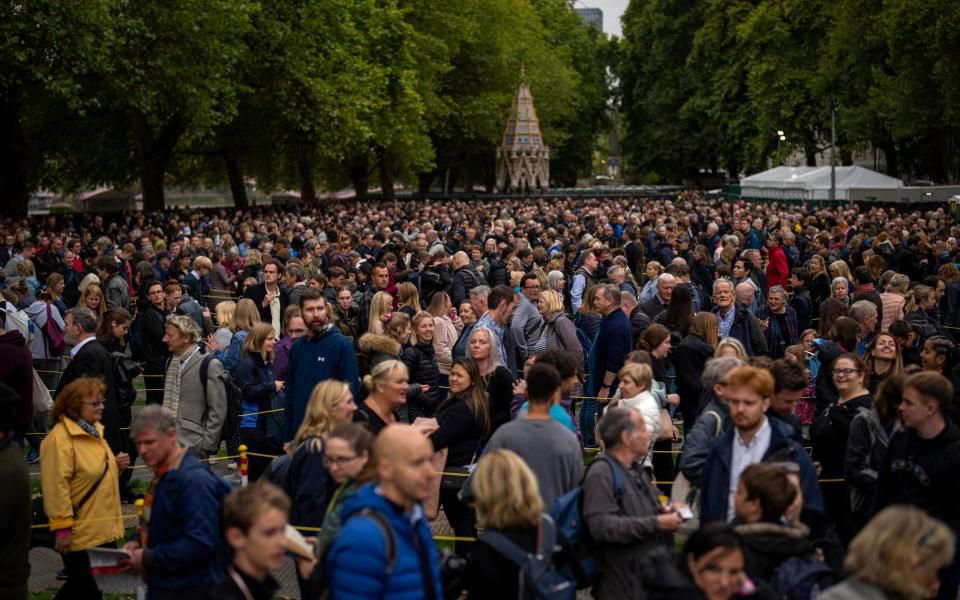
Mourners have been told not to travel to join the queue for the late Queen's lying-in-state after the line on Saturday grew to more then 24 hours long.
In the early hours of Saturday morning, the Department for Digital, Culture, Media and Sport posted a message on its online queue tracker that reads: “The queue is near total capacity with a wait time of at least 24 hours. Please do not travel to join the queue”.
Hundreds of thousands of mourners are expected to visit to pay their respects to the late Queen but visitors have faced queues of up to 10 miles amid fears wait times could grow to more than 30 hours.
Queen Elizabeth II's coffin is currently lying in state at Westminster Hall, where it will remain until the day of her funeral.
During the lying in state, a continuous vigil is mounted by officers of the Household Division, the King’s Body Guards of the Honourable Corps of Gentlemen at Arms, The King’s Bodyguard for Scotland, the Royal Company of Archers and The King’s Bodyguard The Yeomen of the Guard.
King Charles led a vigil around the Queen's coffin on Friday as she continues to lie in state at Westminster Hall.
All of the late monarch's children - the King, the Princess Royal, the Duke of York, and the Earl of Wessex - were in attendance during the 15-minute event, which saw them silently stand guard at all four corners of their mother's catafalque.
Here is everything you need to know about the late monarch's lying in state.
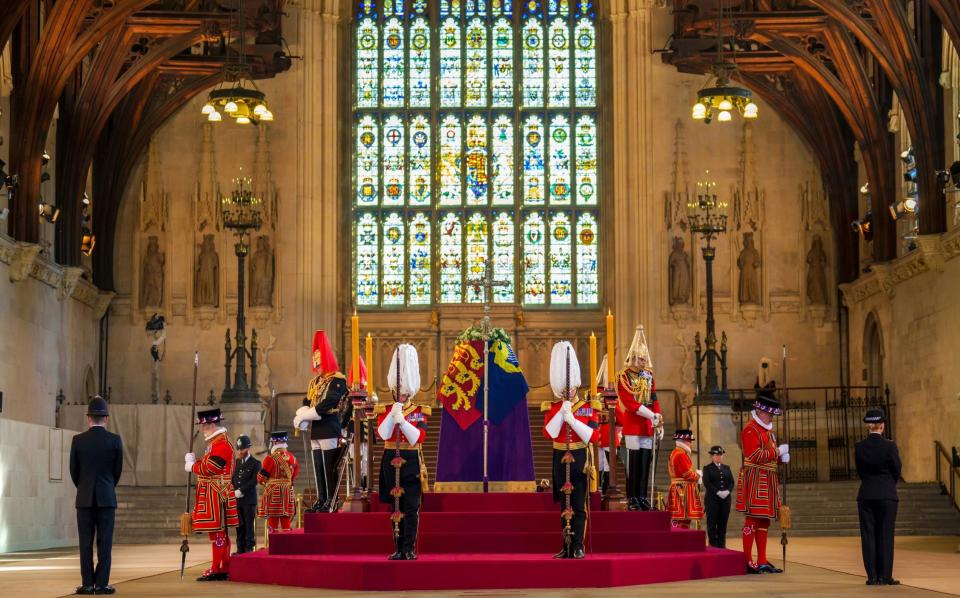
Where is the Queen lying in state?
Her Majesty is lying in state at Westminster Hall in the Palace of Westminster for four days until 6.30am on Monday, the day of her state funeral.
Once inside the hall, people are able to walk past the coffin which is raised on a catafalque and draped in the Royal Standard, with the Orb and Sceptre placed on top.
It is being guarded around the clock by a vigil of units from the Sovereign's Bodyguard, the Household Division or Yeoman Warders of the Tower of London.
How long could you have to queue?
Those hoping to see Queen Elizabeth II lie in state in Westminster Hall have been warned they face waiting in a queue stretching up to ten miles through central London.
People are expected to queue for 24 hours from Friday evening to see the Queen lying in state and the Government has warned "overnight temperatures will be cold".
The Department for Digital, Culture, Media and Sport's (DCMS) online tracker says the expected wait time is more than 24 hours.
On Saturday morning, the DCMS online tracker was updated with the message: “Please do not travel to join the queue”.
Officials warned of chilly temperatures as people queue from Southwark Park in south-east London to pay their respects to the Queen's coffin in Westminster Hall, about five miles away.
Undeterred, a steady stream of people joined the queue on Friday evening, many wearing coats and jumpers.
The queue was earlier paused for 40 minutes when it reached capacity, and when it reopened mourners were urged by the DCMS not to join the line until at least 4pm.
Officials stopped people joining the queue entirely at around 11.35am at the entrance to Southwark Park in south-east London due to overwhelming demand.
The Guinness World Record for the longest queue ever recorded stands at 6 miles, when people lined up to see the grave of Russian musician Vladimir Visotsky in Moscow, 1980.
The queue finishes at Victoria Tower Gardens, where security checks will be carried out, and will direct people south of the river for 6.9 miles to Southwark Park, where there will be a further three miles of zig-zag queues in the park itself.

Watch live queue tracker to see where you may have to start lining up
What 3 Words
The UK government has launched a tracker on the popular what3words app (which allows people to find specific locations using a unique combination of three words) for members of the public to get co-ordinates of exactly where they might need to start queuing to see the Queen lying in state.
What can I expect from the queue?
Along the queue the British Film Institute (BFI) will have an outdoor screen showing archive footage of the Queen and from her reign.
When visitors reach the back of the queue, they will be given a coloured and numbered wristband. The wristband also allows people to leave the queue for a short period to use a toilet or get refreshments, then return to their place in the queue.
More than 1,000 police officers, stewards and volunteers from the Scouts, Samaritans and St John’s Ambulance will be around to assist the public.
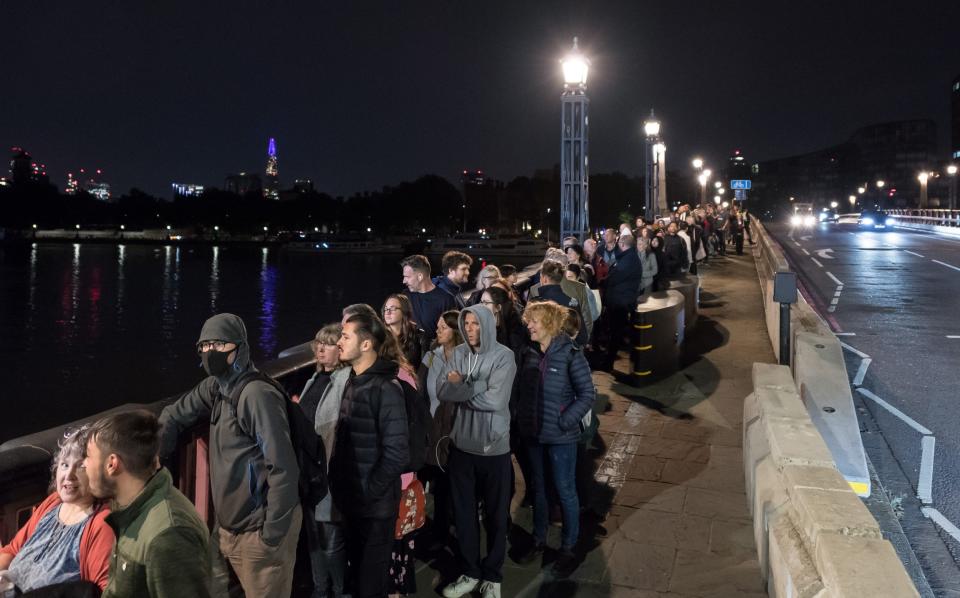
What do I do about food and drink?
While food and drink cannot be taken into the Palace, mourners will be able to leave and rejoin the queue in order to buy refreshments and use portaloos.
Flasks or water bottles, except clear water bottles which must be emptied of their contents before you enter the security search point at the Palace of Westminster, are also banned along with food and liquid of any kind. Any food or liquids must be consumed in the queue or disposed of before entering the security search point at the Palace of Westminster.
Nearby buildings including the Southbank Centre, the National Theatre and Shakespeare’s Globe will open for extended hours to provide comfort breaks and sell food and drink.

What do I need to bring?
Those wanting to attend have been told to take power banks to charge their phone, food and drink to consume en route, and clothing appropriate for the weather, currently expected to be cloudy with sunny intervals.
There will be airport-style security checks at Victoria Tower Gardens before entering the Palace of Westminster. There are strict bag restrictions in place.
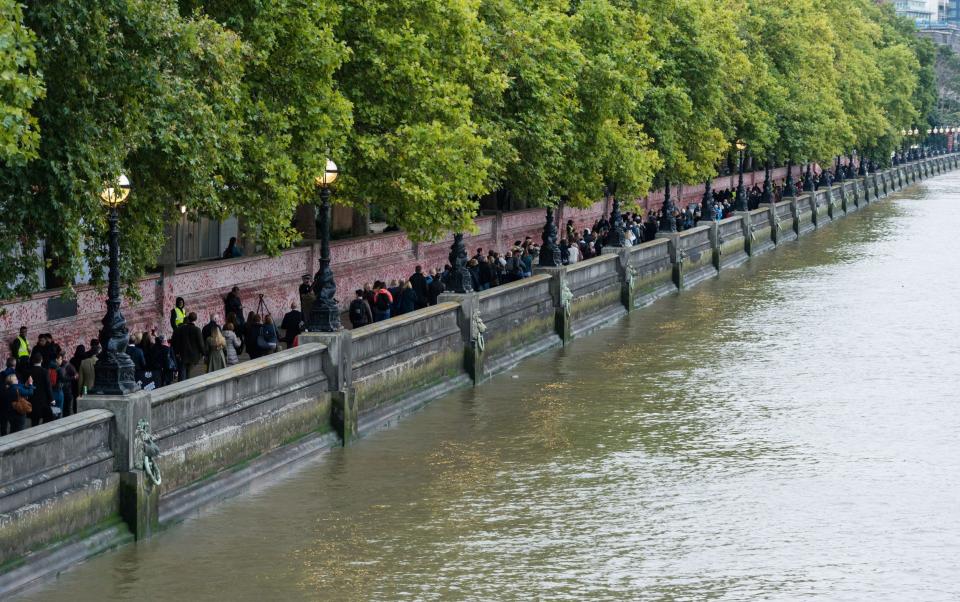
Visitors are only permitted to bring one small bag per person into the Palace of Westminster. It must be smaller than 40cm x 30cm x 20cm, with one simple opening or zip in order to move quickly through the security check.
If visitors bring a large bag that is not permitted to take into the Palace of Westminster, there will be a bag drop facility before you enter the security search point.
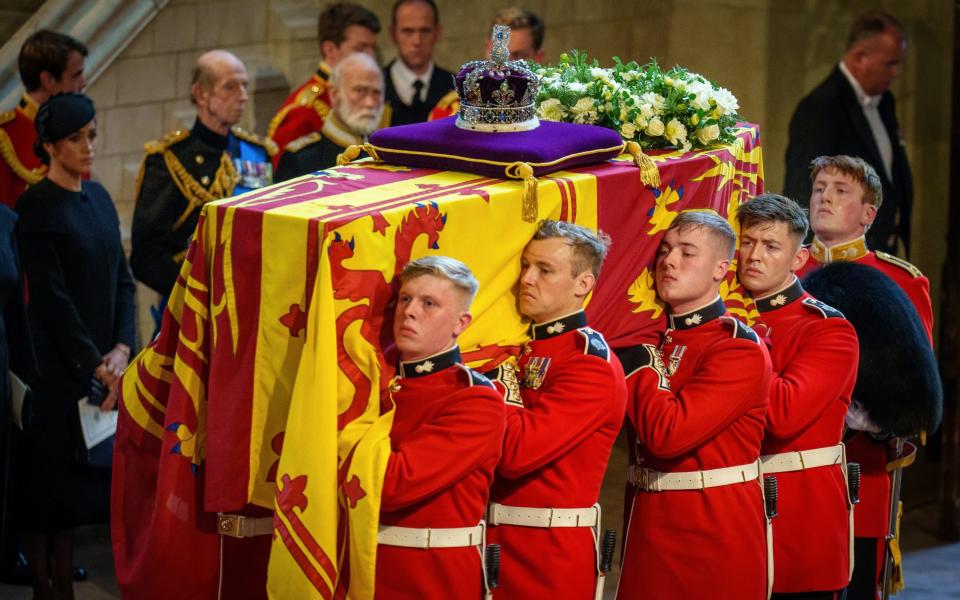
Am I allowed to take photos?
Photography and filming will be banned inside Westminster Hall, where phones will be required to be on silent mode.
What can’t I bring in?
Banned items include flowers, candles, soft toys and photographs, which should only be left in a dedicated floral tribute area in the nearby Green Park.
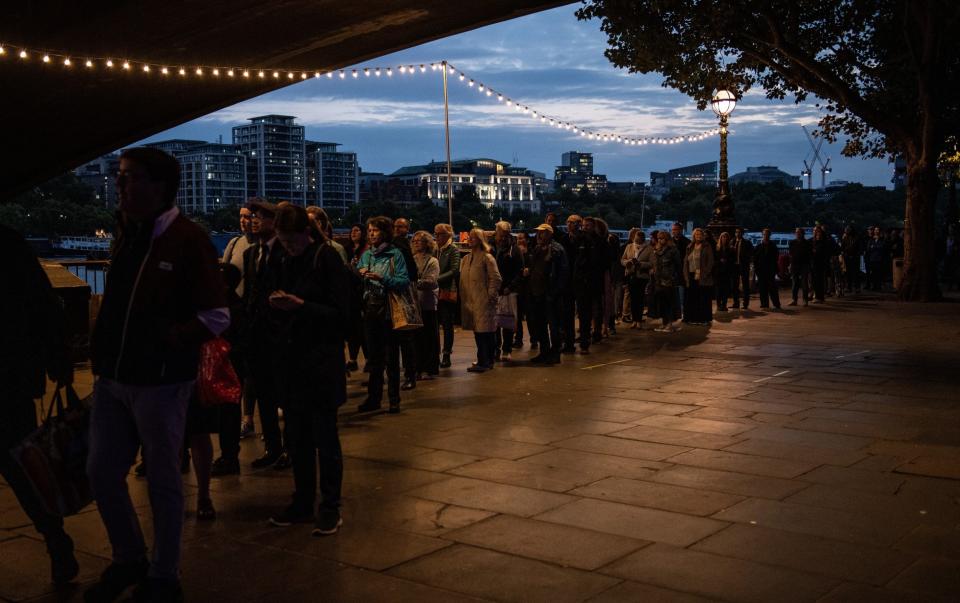
Also prohibited are sharp items, any personal defence equipment that could be used as a weapon, whistles and laser devices, banners, flags, sleeping blankets and folding chairs. Airport-style security search points will be in place once visitors reach the Palace.
How do I need to behave?
Once people are in the Palace, they should remain silent and “dress appropriately for the occasion”. This amounts to a ban on clothes that carry any political or offensive slogans. Antisocial behaviour, queue-jumping or drunken behaviour will not be tolerated.
What is the history of the tradition?
The tradition of the lying in state of the monarch began in 1910, when Edward VII was the first to lie in state in Westminster Hall.
George VI - the Queen's father - was the last sovereign before Queen Elizabeth II to die. On top of his coffin lay the Imperial State Crown, the Orb, and Sceptre.
More than 300,000 people queued day and night in bitter, frosty conditions to say their final goodbyes to King George.
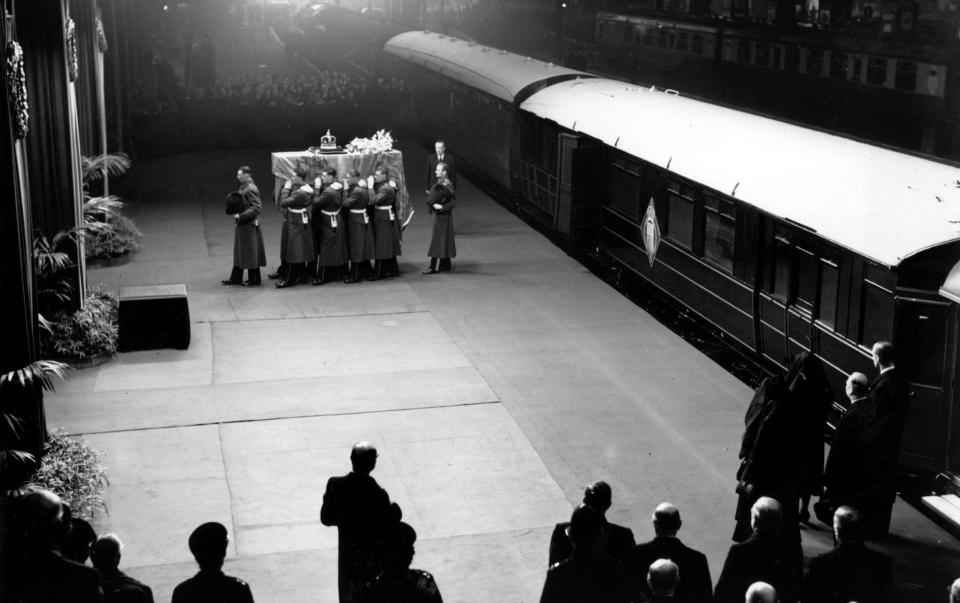
Queen Victoria requested that she not lie in state. When she died at Osborne House on the Isle of Wight in 1901, a semi-private lying in state was arranged for three days to allow Victoria's servants and friends to pay their respects.
The most recent member of the Royal family to lie in state was Queen Elizabeth, the Queen Mother, following her death in 2002, when an estimated 200,000 people visited to pay their respects.
Prince Philip, however, opted not to lie in state following his death in April 2021, and his coffin remained at Windsor Castle ahead of his burial in the Royal vault beneath St George's Chapel.
Two prime ministers - William Gladstone in 1898 and Sir Winston Churchill in 1965 - also lay in state at Westminster Hall, attracting hundreds of thousands of people.
Margaret Thatcher insisted she did not want to lie in state, saying that it would not be "appropriate".
This article is kept updated with the latest information.
